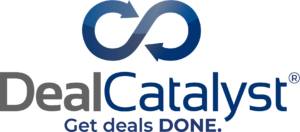November 10, 2021 - by Meredith Coffey. With year-end – and new-LIBOR-loan-end – less than two months away, market participants are busy getting all potential replacement rates working. Below we discuss the latest SOFR sightings – and some possible coalescence around conventions – as well as movement on the sensitivity side.
Tuesday was a $2+ billion day for SOFR, with Goldman Sachs ($850 million for Cincinnati Bell), Credit Suisse ($775 million for North American Bancard), Deutsche Bank ($520 million for American Physician Partners) and BofA/RBC/Wells Fargo ($300 million for Ping Identity) all bringing out SOFR-based leveraged loans. While pricing varied, at least three of the four loans offered separate Credit Spread Adjustments (“CSAs”) using the nascent convention of 10 bps for 1M SOFR/15 bps for 3M SOFR/25 bps for 6M SOFR. (We would be remiss if we didn’t acknowledge that details also emerged on $15 billion of IG SOFR revolvers for Toyota Motor Credit. While whopping, they also are likely undrawn and thus perhaps less of a test case.)
While largely on Team SOFR, regulators acknowledge that banks can use other reference rates that are appropriate for their funding model. However, the regulators generally warn that banks and borrowers must be cognizant of fragilities in those rates. More specifically, the OCC recently released a 30-question LIBOR transition self-assessment tool, and noted that it would examine non-SOFR loans first.
With these warning shots, it may be little surprise that credit sensitive rate (CSR) providers have been polishing their methodologies. In October, Bloomberg released a consultation on BSBY, intended to enhance its resiliency in periods of market disruption. BSBY uses data from bank funding markets like deposits, CDs, CP and bank bonds; it breaks this data into Days-to-Maturity (“DTM”) corridors and uses a rolling three days of data to calculate the O/N, 1M, 3M, 6M and 12M BSBY rate. If there is insufficient data to meet their volume thresholds, BSBY would add a fourth and then a fifth day of data in the corridor to publish the rate. If data still were insufficient, BSBY initially had planned to publish the prior day’s rate – but this was not widely embraced. Thus, last month Bloomberg consulted on instead expanding the DTM corridors, first to the neighboring corridors (“Initial Expansion”) and then, if that were insufficient, using a linear regression global fit (“Global Fit” or “GF”) on the entire set of data across tenors.
In the very unlikely scenario that the GF data were insufficient, BSBY would calculate a “Spread Add-On” of the average of the five-year and five-day difference between BSBY and SOFR, with the idea being that this balances short-term and long-term rate trends. (Note that the original proposal was to calculate the difference between BSBY and OBFR, but respondents preferred SOFR.) Ultimately, respondents were supportive and the updated methodology will be implemented Monday, November 15th. The LSTA’s Tess Virmani is scheduled to join a webcast Tuesday, November 16th, to discuss the methodology and implications for documentation and fallbacks.
BSBY is not the only one dotting the i’s and crossing the t’s on its CSR. Last week, SOFR Academy joined the LSTA’s Weekly LIBOR Q&A Call to explain the workings of “AXI”, the Across the Curve Spread Indices, flag a Term SOFR+AXI Concept Document and walk through a recent technical White Paper. There are several things that differentiate AXI in the alphabet soup of CSRs.
- First, while it uses similar underliers to most other CSRs – deposits, CDs, CP and bank bonds – AXI doesn’t exactly group the datapoints into tenor buckets. Instead, it separately computes weighted average or median spreads on tenors of longer-dated bonds and spreads on shorter-term deposits and money market instruments. Then it averages the aggregated short- and long-term spreads into an average “across the curve” spread (AXI). AXI can then be scaled up or scaled down to match an interest contract tenor. Because it uses a volume weighted median or average, AXI is pulled to where the most data resides.
- Second, AXI is only offered as a spread to SOFR; thus, it further embeds SOFR and may make a credit sensitive index more palatable to regulators.
At the end of the day, a suite LIBOR replacement rates are getting going, providing lenders and borrowers a multiplicity of solutions for their various challenges. The LSTA is a member of the ARRC and has been working to effectuate all potential replacement rates in the syndicated loan market. Questions are tackled both at LIBORinformation@lsta.org and on the LSTA’s Weekly LIBOR Q&A Call.





